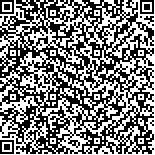| Quote
: |
林心君,胡海霞,何昱霖,刘佳绣,陈勇,施红.石斛合剂基于PKB/FoxO1通路抑制糖尿病大鼠肝糖异生的机制研究[J].湖南中医药大学学报英文版,2021,41(8):1166-1171.[Click to copy
] |
|
| |
|
|
| This paper
:Browser 2308times Download 625times |
| 石斛合剂基于PKB/FoxO1通路抑制糖尿病大鼠肝糖异生的机制研究 |
| 林心君,胡海霞,何昱霖,刘佳绣,陈勇,施红 |
| (福建中医药大学中西医结合学院, 福建 福州 350122;福建中医药大学中西医结合研究院, 福建 福州 350122) |
| 摘要: |
| 目的 观察复方石斛合剂对糖尿病大鼠肝PKB/FoxO1信号通路分子蛋白表达的影响,探讨其抑制肝糖异生的分子机制。方法 随机选取11只雌性Wistar大鼠为正常组,其余36只大鼠高脂高糖饲料喂养,6周后腹腔注射STZ 2次。按糖尿病诊断标准,筛选出糖尿病成模大鼠33只,再随机分为模型组、二甲双胍组、石斛合剂组,每组11只。给药12周后,检测空腹血糖(FBG)、血清空腹胰岛素(FINS)、游离脂肪酸(FFA);免疫组化检测各组的肝脏的胰岛素受体(InsR)、叉头框蛋白O1(FoxO1)、磷酸烯醇式丙酮酸羧激酶(PEPCK)表达情况。Western blot检测各组大鼠肝组织PKB、p-PKB、FoxO1、p-FoxO1的蛋白表达情况。结果 与正常组比较,模型组FBG、FINS、FFA明显升高(P<0.01);与模型组比较,石斛合剂组FBG、INS、FFA显著下降(P<0.05或P<0.01);石斛合剂组与二甲双胍组比较,差异无统计学意义(P>0.05)。免疫组化结果显示石斛合剂能促进InsR表达,抑制PEPCK和FoxO1的表达(P<0.05)。Western blot结果显示石斛合剂组p-PKB/PKB、p-FoxO1蛋白表达增加(P<0.05或P<0.01);FoxO1表达减少(P<0.01)。结论 石斛合剂能抑制肝糖异生,调节糖脂代谢,增强胰岛素敏感性,可能与其调节PKB/FoxO1通路相关蛋白的表达有关。 |
| 关键词: 胰岛素抵抗 糖异生 石斛合剂 糖尿病 PKB/FoxO1信号通路 |
| DOI:10.3969/j.issn.1674-070X.2021.08.006 |
| Received:June 18, 2021 |
| 基金项目:国家自然科学基金项目(81503438,81973827);福建省自然科学基金项目(2019J01332);福建中医药大学科研平台校管课题(X2019001-平台)。 |
|
| Study on the Mechanism of Dendrobium Mixture in Inhibiting Hepatic Gluconeogenesis in Diabetic Rats Based on PKB/FoxO1 Pathway |
| LIN Xinjun,HU Haixia,HE Yulin,LIU Jiaxiu,CHEN Yong,SHI Hong |
| (College of Integrated Traditional Chinese and Western Medicine, Fujian University of Traditional Chinese Medicine, Fujian, Fuzhou 350122, China;Institute of Integrated Traditional Chinese and Western Medicine, Fujian University of Traditional Chinese Medicine, Fujian, Fuzhou 350122, China) |
| Abstract: |
| Objective To observe the effect of Dendrobium Mixture on the protein expression of liver PKB/FoxO1 signaling pathway in diabetic rats, and to explore its molecular mechanism of inhibiting liver gluconeogenesis. Methods 11 female Wistar rats were randomly selected as normal group, the remaining 36 rats were fed with high-fat and high-sugar, 6 weeks later, STZ was injected intraperitoneally twice. 33 diabetes model rats were screened according to the diagnostic criteria of diabetes, and then randomly divided into model group, metformin group, Dendrobium Mixture group. After 12 weeks of administration, fasting blood glucose (FBG), serum fasting insulin (FINS), and free fatty acid (FFA) were tested; and the liver of each group was tested by immunohistochemistry for insulin receptor (InsR), forkhead box protein O1 (FoxO1), phosphoenolpyruvate carboxykinase (PEPCK) expression. Western blot method was used to detect the expression of PKB, p-PKB, FoxO1, p-FoxO1 in liver tissues of rats in each group. Results Compared with the normal group, FBG, FINS and FFA in the model group increased significantly (P<0.01); compared with the model group, FBG, INS and FFA in the Dendrobium Mixture group decreased significantly (P<0.05 or P<0.01); and there was no significant difference between Dendrobium Mixture group and metformin group (P>0.05). The results of immunohistochemistry showed that Dendrobium Mixture can promote the expression of InsR and inhibit the expression of PEPCK and FoxO1. Western blot results showed that the expression of p-PKB/PKB and p-FoxO1 protein in the Dendrobium Mixture group increased (P<0.05 or P<0.01); the expression of FoxO1 decreased (P<0.01). Conclusion Dendrobium Mixture can inhibit liver gluconeogenesis, regulate glucose and lipid metabolism and enhance insulin sensitivity. It may be related to the protein expression of signal molecules related to the PKB/FoxO1 signaling pathway. |
| Key words: insulin resistance gluconeogenesis Dendrobium Mixture diabetes PKB/FoxO1 signaling pathway |
|

二维码(扫一下试试看!) |
|
|
|
|


